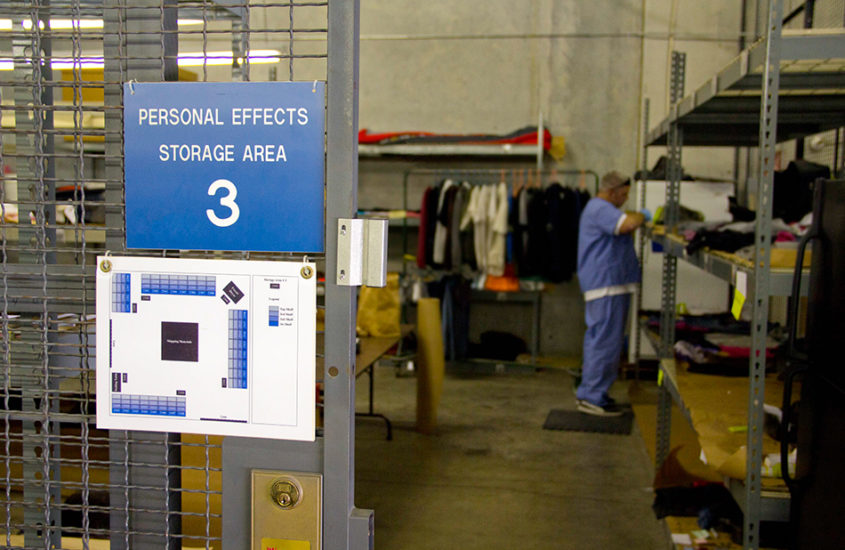Part 10: Personal Effects Operations

This is part 10 of a 12-part series describing the consequences of a typical large-scale loss of life incident. Following the framework of the 12 Principles of Crisis Management, I describe these consequences and offer best practice solutions for each consequence.
Consequence 10
There are potentially thousands of personal belongings that need to be recovered, processed and returned to legal owners. Beyond the financial value for the actual belonging, there is often the sentimental value. From a legal standpoint, it is almost impossible to place a monetary value on the sentimental belongings. However, for families, the sentimental belongings are hugely important and often the most sought after items. There are also the practical matters of protecting and returning sensitive items containing confidential personal or business information, including the recovery of photographs and electronic media. Personal effects can be recovered from the scenes of disasters, morgues and family assistance centers. Finally, this must be done within the framework of various local and national laws.
Solutions
Have a plan and resources to recover, safeguard, examine, decontaminate, and inventory the personal effects. During this process you are looking for any identifying features that will help establish the ownership of the items. We call those associated items. You should also plan to recover electronic media such as videos, photographs, or information on SIM cards. For example, photo identification cards, credit cards, clearly marked luggage or desk contents, and other items with names or unique reference numbers are often easily linked or associated to a specific person. Items that cannot be associated should then be categorized and photographed. We call those items unassociated.
While this process occurs, the legal next of kin, sometimes called the person eligible to receive effect (PERE), is asked if they would like to have their items or their loved one’s associated property back. In many cases, a large majority will say yes. They are then asked if they would like to look at a catalog of the unassociated belongings to claim any of those items. Again, the majority of families will say yes.
The belongings are then returned to the survivors or families; they are cleaned or repaired if requested. Some people deliberately want the belongings as is. They want to be the mother who washes her son’s shirt for the last time. If possible, belongings can be repaired. Similarly, some people may want the items hand delivered or simply shipped to them.
Unwanted or unclaimed items should be stored, ideally for 24 months, to give all survivors and families an opportunity to claim the belongings, including those that may need more time or change their minds. At the end of that period, the items should then be completely destroyed.
The collection, recovery, and return of personal effects is not an easy process, especially in an event involving children. Care should be given to who performs this task, including providing appropriate mental health or psychosocial follow-up, to identify any issues or concerns. It is also a very expensive task and one that companies should consider having insurance for so that it can be done properly.
Examples
Never underestimate the value of personal effects. “They’re one of your last links to your loved one,” said Jim Hurd of Maryland, who lost his son Jamie on Paris-bound TWA Flight 800. “Mundane, simple things are what they had with them. This is it; this is what you have left.”
Not every family member will want to participate in this process. Gail Dunham, head of the National Air Disaster Alliance/Foundation, said, “Some people aren’t interested (in effects), but it’s very important that no one else make that decision for them.” The National Air Disaster Alliance/Foundation is a great resource both for families and those doing crisis management plans.
Finally, when it does come time to return these belongings, remember it is not about how you might want them, but about what that family wants. One mother, who lost her daughter in the Lockerbie air disaster said, “I remember the day that the package arrived. I knew what it was…they put it in the front hall and I left for the day. We all came back that evening and the house was filled…with this smell. It was a combination of disinfectant, jet fuel and mildew – a very distinctive smell that in some ways was offensive but in another way it was filling the house with whatever was left of Alexia in some way.”
